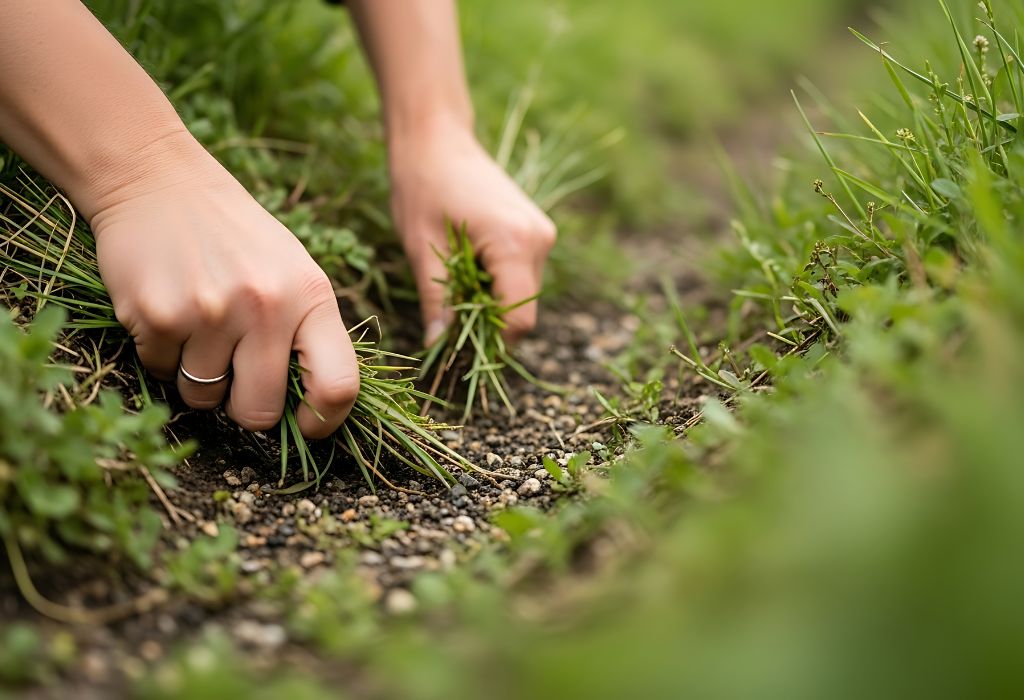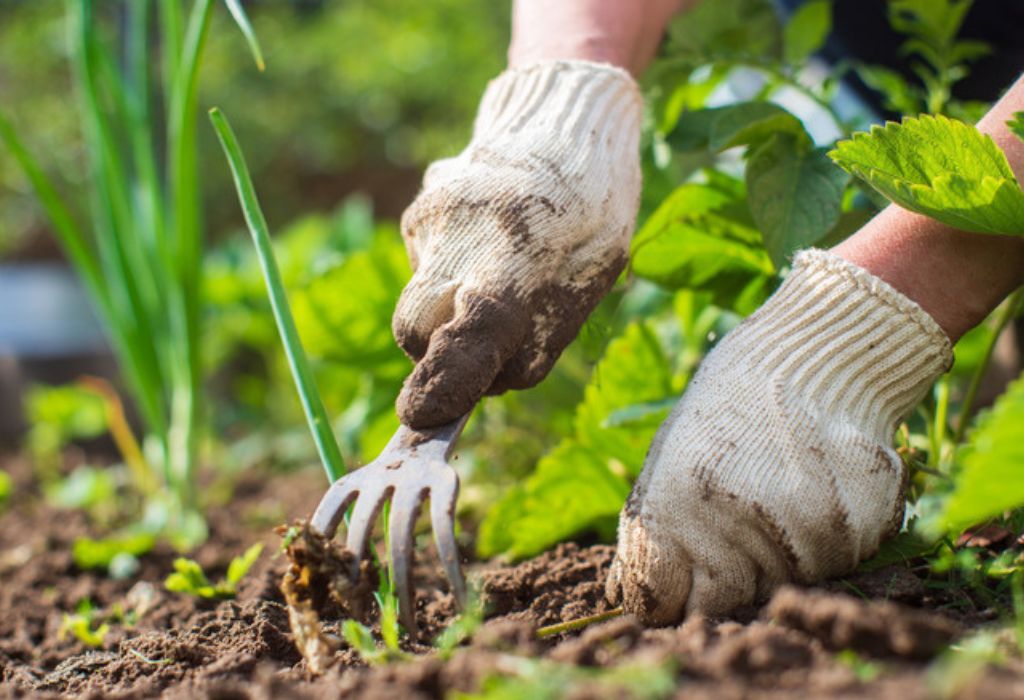Every gardener knows the frustration of seeing weeds take over a carefully prepared bed. A lush green garden can quickly turn into a messy jungle if weeds are left unchecked. Studies show that uncontrolled weeds can reduce garden yields by 30–50%, stealing valuable nutrients, water, and sunlight from your plants. On average, home gardeners spend over 120 hours per year pulling weeds.
The good news? Removing weeds doesn’t have to be overwhelming. With the right techniques, you can not only get rid of existing weeds but also prevent them from coming back. This guide covers easy and effective methods—natural, safe, and long-lasting—for a weed-free garden.
I. Why Removing Weeds Matters

- Weeds compete with your plants for nutrients, sunlight, and water.
- They attract pests and often harbor plant diseases.
- Uncontrolled weeds reduce vegetable and flower yields significantly.
- A weed-infested garden looks messy and requires more maintenance.
👉 Removing weeds is not just about appearance; it’s about protecting your plants and ensuring a healthy harvest.
II. Best Methods to Remove Weeds from Garden
1. Hand-Pulling
The oldest and most effective method. When soil is damp after rain or watering, grasp the weed close to the base and pull it out completely, roots and all.
- Works best on young weeds.
- For stubborn roots, use tools like a hand weeder or trowel.
2. Hoeing
Hoeing slices weeds off just below the soil surface. It’s quick for large areas, especially vegetable beds.
- Best for annual weeds before they flower.
- Keep the hoe sharp for clean cuts.
- Shallow hoeing prevents disturbing deeper seeds.
3. Digging Out Deep-Rooted Weeds
Perennials like dandelions or bindweed need extra effort. Use a garden fork or weeding knife to dig out roots without breaking them. Even a small piece left behind can regrow.
4. Mulching After Removal
Once weeds are cleared, cover the soil with mulch. A 2–3 inch layer of straw, wood chips, or shredded leaves blocks sunlight and prevents regrowth.
- Organic mulch improves soil health as it decomposes.
- Inorganic mulch (plastic or fabric) lasts longer in walkways.
5. Using Boiling Water or Vinegar
For weeds growing in cracks, driveways, or garden edges:
- Boiling water kills weeds instantly by scalding roots.
- Vinegar sprays burn foliage and work well on small weeds.
- Avoid spraying vinegar on desirable plants—it is non-selective.
6. Soil Solarization
In summer, cover moist soil with clear plastic for 4–6 weeks. The sun heats the soil to over 120°F, killing weeds, seeds, and even soil pests.
III. Natural vs Chemical Weed Removal
- Natural Methods – Hand-pulling, mulching, solarization, and natural sprays. Eco-friendly, safe for pets, soil, and crops.
- Chemical Herbicides – Provide fast results but risk harming soil health, pollinators, and water sources.
- Best Choice – For home gardens, natural methods are safer and more sustainable. Chemicals should be the last resort.
IV. How to Remove Weeds from Different Garden Areas

1. Vegetable Gardens
- Stick to chemical-free methods (hand-pulling, mulching, hoeing).
- Mulch with straw or shredded leaves to keep soil safe and fertile.
2. Flower Beds
- Pull weeds regularly to maintain neatness.
- Add mulch to block sunlight and enhance beauty.
3. Lawn Edges and Pathways
- Boiling water and vinegar sprays work best here.
- Flame weeding is an option for paved areas, but use carefully.
4. Raised Beds
- Weed less often due to controlled soil.
- Prevent weeds by lining the bottom with weed fabric and planting closely.
V. Mistakes to Avoid While Removing Weeds
- Leaving root fragments behind, which leads to regrowth.
- Pulling weeds when soil is dry—roots break easily.
- Allowing weeds to flower and produce seeds.
- Overusing chemicals, which damage soil and future crops.
VI. Tips to Prevent Weeds After Removal
- Apply a fresh mulch layer every season.
- Use ground covers like clover or creeping thyme.
- Install drip irrigation so only plant roots get water.
- Rotate crops to break weed cycles.
- Keep pathways and garden borders tidy.
👉 Prevention saves you more time than repeated weeding.
VII. Seasonal Weed Removal Strategy
- Spring – Remove weeds early before they spread seeds. Apply mulch to beds immediately.
- Summer – Do weekly inspections, hoe young weeds, and refresh mulch layers.
- Fall – Clear weeds before winter and plant cover crops to suppress new growth.
- Winter – Keep beds clean and prepare soil for next spring.
VIII. FAQs: Weed Removal
- What is the fastest way to remove weeds?
Pulling by hand when soil is moist or using a sharp hoe for young weeds. - Can vinegar kill weeds permanently?
No, vinegar burns the leaves but often doesn’t kill deep roots. - How do I remove weeds without damaging plants?
Pull weeds carefully by hand or use small tools to loosen soil. - Should I remove weeds before mulching?
Yes. Mulch prevents new weeds but won’t kill established ones. - What tool works best for deep-rooted weeds?
A garden fork, weeding knife, or specialized root puller.
IX. Statistics Every Gardener Should Know
- Uncontrolled weeds can reduce garden yields by 30–50%.
- Gardeners spend over 120 hours annually on weed removal.
- A single mature weed can produce up to 10,000–15,000 seeds.
- Mulching reduces weed growth by up to 80% when applied properly.
- Cover crops reduce weed pressure by 50% or more in vegetable gardens.
Conclusion
Weeds are one of the toughest challenges gardeners face, but they don’t have to win. By using hand-pulling, mulching, digging, and solarization, you can keep your garden clear and healthy without relying on harmful chemicals.
The secret is not just removal—it’s long-term prevention. Cover your soil, stop weeds before they sprout, and stay consistent with maintenance. With these easy and effective methods, you’ll spend less time fighting weeds and more time enjoying a beautiful, thriving garden.
I’m Maya L. Greenwood, a lifelong plant lover who believes anyone can grow something beautiful with the right guidance. After years of testing soil mixes, pruning methods, irrigation tricks, and pest-safe solutions, I started EasyGardenTips.com to turn hard-won lessons into step-by-step advice. From seed starting and container gardens to composting and seasonal checklists, my goal is to make gardening simple, sustainable, and fun.
